Rift: Planes of Telara Preview
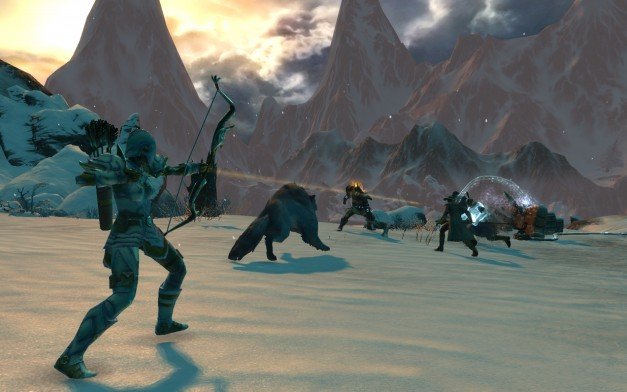
Trion Worlds, the team behind the upcoming inter-dimensional MMO Rift, look like they know what they're doing. When it comes to the interface, they're not reinventing the wheel; they're simply taking the best bits from the best MMOs, and burnishing them.
Jumping into combat feels familiar, and comfortable. You hit auto-attack for your basic melee skill, then go to work on your abilities and spell rotations, all bound to the number keys. Sound familiar? The end-product is punchy and substantial; there's some satisfying audio feedback during scraps, and the unit animations are a pleasure to watch.
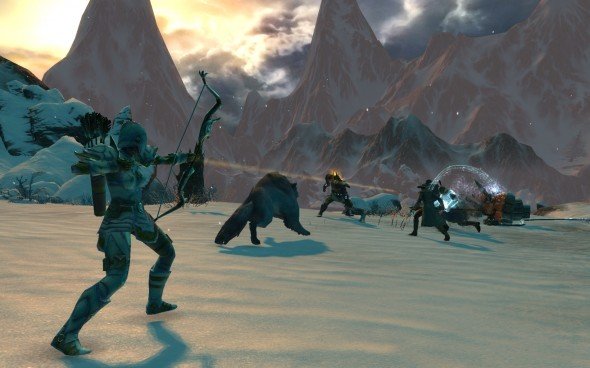
One tidy little innovation really made me smile when I played: area looting. If you've slain a bunch of mobs, you don't need to rifle through every individual pocket. Within a certain radius of your character, you can auto-loot every item from every corpse you have looting rights to.
And you'll be looting a lot of corpses. Rift is built around a dynamic content system that spawns four flavours of elemental rift into the world, through which demonic entities pour. If these rifts are left to linger, they create what's known as a 'foothold', the visual representation of which is a knot of slimy tendrils that anchor the floating rift to the earth. Their corrupting influence spreads the longer they're left, and increasingly tough enemies appear, who drop consequently better and rarer loot.
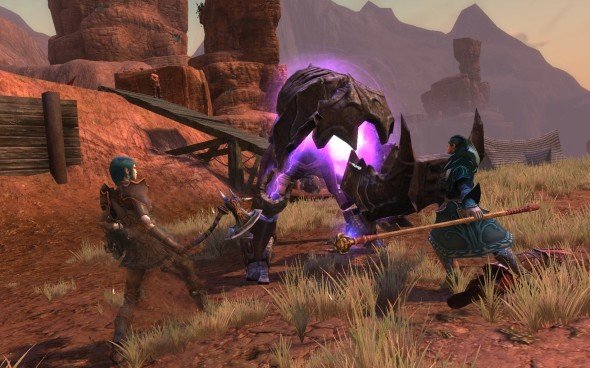
Players must tackle these to defeat the invaders and close these rifts, or they'll spread incrementally across the server. What happens if they're left unchecked? The world gets messed up good and proper. If towns are engulfed, players no longer have access to the facilities there, so it pays to play Neighbourhood Watch and keep the beggars in check. To my mind, it sounds a little like Warhammer Online's public quest system, but with a sense of creeping growth. Or degeneration, depending on how you look at it.
What's really compelling is the intricacy and fluidity of Rift's class system. The basic classes – or callings, as Trion have dubbed them – are Clerics, Warriors, Mages and Rogues. That pretty much covers healing, ranged DPS, melee DPS and tanking, but beneath your basic classchoice, you also have three class specialisations, or Souls, to tinker with and switch between on the fly. These push your class in specific directions, so warriors can become damage dealers, or area-of-effect specialists, or some other battlefield role, as the situation warrants.
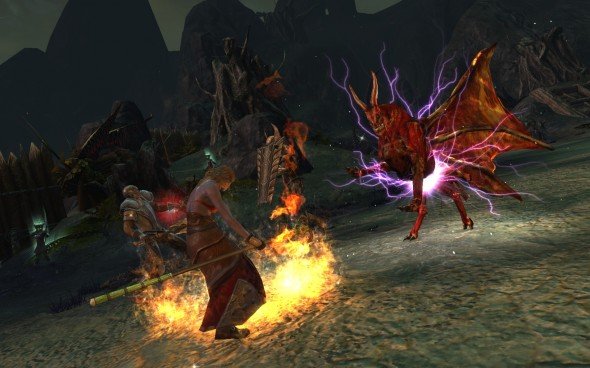
The flexibility this will bring to partyplay could be phenomenal. Every MMO player has experienced those 'where are all the bloody healers!' moments when waiting to tackle an instance. I can't see that being an issue when a whole bunch of players in your group are likely to have a cheeky healing spell tucked under their magely skirts.
The biggest gaming news, reviews and hardware deals
Keep up to date with the most important stories and the best deals, as picked by the PC Gamer team.
The demo I was taken through dealt with the opening scenes of the game, and initial character creation. After tinkering with your toon's looks, you choose a race. There are six in total; three which fall under the allegiance of the Guardian faction, and three which fall under the allegiance of the Defiants.

You're then treated to a remarkable series of cutscenes which detail the neardestruction of the world of Telara, and as a result, your genesis. The story is an esoteric one, and as my character was part of the Defiant faction, I saw the Defiant side of the story. Just as the world is going to ruin at the hands of Telara's arch-nasty The Destroyer, the Defiants use their advanced technological knowhow to create you, the perfect hero. They then open a portal to the past, and your destiny is set: as the last, best hope of the Defiants, you're thrown back in time to close The Destroyer's rifts and stop the war before it spirals out of control.
The first staging area for your character is the base where the Defiants created you. It's a place to learn more about the world, the conflict, and the way character classes work, before you head past cheering NPC allies, through the time-portal, and into the game-world proper.
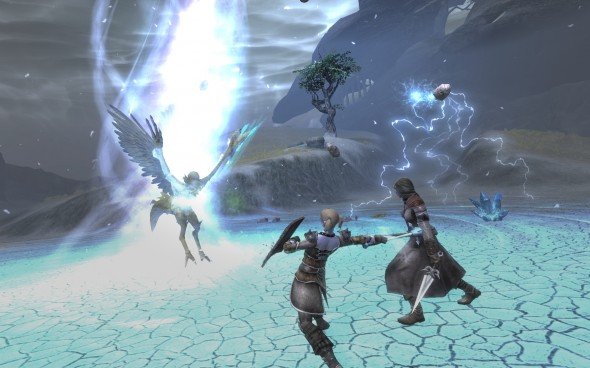
What I've seen so far of Rift excites me. There's depth and flexibility in the class system, a unique storyline, and it kicks pretty much every MMO into touch when it comes to visual fidelity.
But we've still only seen a fraction of the game. Presumably there are more activities to engage in than just the endless cycle of mob-bashing and rift-closure. What are the quests like? Are there many party-friendly instances? If so, are they engaging, and as unique as Rift's mythos and backstory? How developed is the endgame content? And what really happens if a server goes unchecked, and rifts cover the world? There's so much left to see before we can draw any real conclusions. But what I've seen so far inspires hope for this brave new entry into the MMO scene.

Al's games-and-tech quilling began on PC Gamer Specials magazine in the year 2000, before moving on to PC Format and then out into game development. In the last 23 years he’s reviewed a bajillion games and assorted pieces of hardware, spent 13 years in game dev, built PCs, dry-stone walls, and ebikes, and logged 1000 hours in Fallout 76. His current obsessions are tiny PCs and sledgehammering every single object in Dysmantle into its constituent parts.

